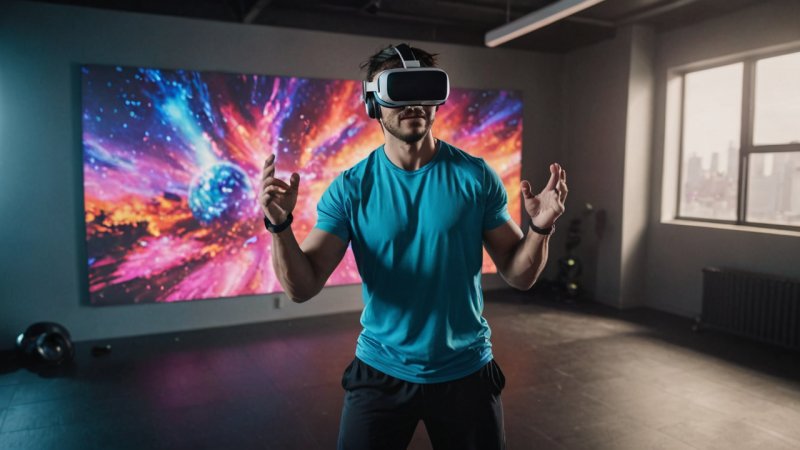In recent years, virtual reality (VR) has emerged as a groundbreaking technology that is transforming various industries, including fitness. With the ability to immerse users in a digital environment, VR fitness applications offer a unique way to engage in physical activity. This article explores how virtual reality compares with traditional workout methods and other emerging fitness technologies, highlighting the pros and cons of each. By the end, you’ll have a clearer understanding of how VR can enhance your fitness journey.
Traditional Fitness Methods vs. Virtual Reality
Traditional fitness methods typically involve gym workouts, outdoor activities, or group classes. These approaches have been the foundation of physical fitness for decades. On the other hand, VR fitness incorporates immersive experiences, allowing users to engage in workouts that feel like games.
Engagement
Pros of VR: One of the standout features of VR fitness is its ability to keep users engaged. The gamification of workouts can make exercising feel less like a chore and more like an adventure, thus increasing motivation.
Cons of VR: While VR can be engaging, it may not suit everyone. Some individuals may prefer the social interaction and camaraderie found in traditional fitness classes.
Accessibility
Pros of Traditional Methods: Traditional fitness activities are usually more accessible, requiring minimal equipment and allowing for outdoor or home workouts.
Cons of VR: VR fitness often requires a significant upfront investment in equipment, such as VR headsets and compatible devices, which can be a barrier for some users.
Fitness Apps vs. VR Workouts
Fitness apps have gained popularity as a convenient way to track workouts, provide routines, and offer instructional videos. In contrast, VR workouts provide a fully immersive experience that transports users to different worlds for their fitness routines.
Interactivity
Pros of VR: The interactivity of VR workouts is unparalleled. Users can engage in virtual environments, compete with friends, and receive real-time feedback on their performance.
Cons of Fitness Apps: While fitness apps can provide structure and guidance, they lack the immersive experience that VR offers, which may lead to decreased motivation over time.
Variety of Workouts
Pros of Fitness Apps: Fitness apps often feature a wide variety of workout styles, from yoga to weightlifting, allowing users to customize their fitness routine based on personal preferences.
Cons of VR: Although VR fitness options are expanding, the range of workout types may still be limited compared to traditional apps, which can offer specialized programs.
Safety and Health Benefits
When considering fitness options, safety and health benefits are paramount. Both VR workouts and traditional fitness methods have their strengths and weaknesses in this regard.
Injury Prevention
Pros of VR: VR fitness programs can guide users through proper techniques, helping to reduce the risk of injury, especially for beginners.
Cons of Traditional Methods: Traditional workouts often lack personalized feedback, which can lead to improper form and potential injuries.
Physical and Mental Health
Pros of VR: VR has been shown to positively impact mental health by providing an escape and a fun way to exercise. The immersive experience can help reduce stress and anxiety.
Cons of VR: Some users may experience motion sickness or discomfort when using VR, which can deter them from consistent exercise.
Conclusion
Virtual reality is undoubtedly changing the landscape of fitness experiences, offering a unique and engaging alternative to traditional methods and fitness apps. While VR provides immersive experiences, enhanced interactivity, and potential mental health benefits, it also comes with challenges such as equipment costs and limited workout varieties. On the other hand, traditional fitness methods and apps offer accessibility, a wide range of workout options, and social interaction that some users may prefer. Ultimately, the best choice depends on your personal preferences, goals, and circumstances. For those seeking an innovative and fun way to stay active, exploring VR fitness could be a rewarding endeavor.






